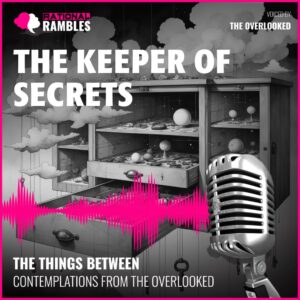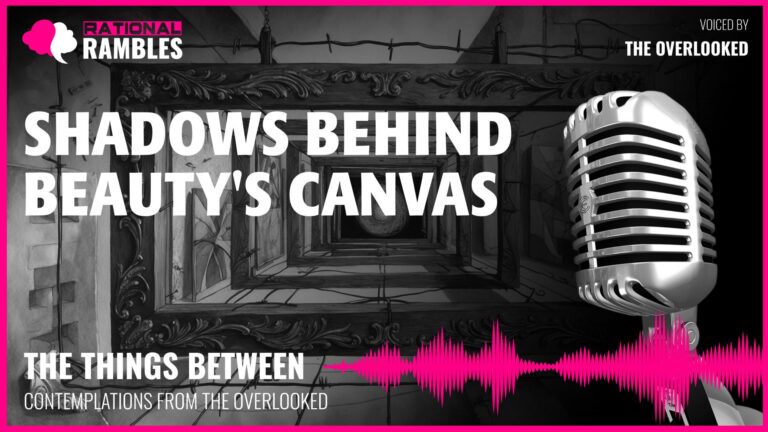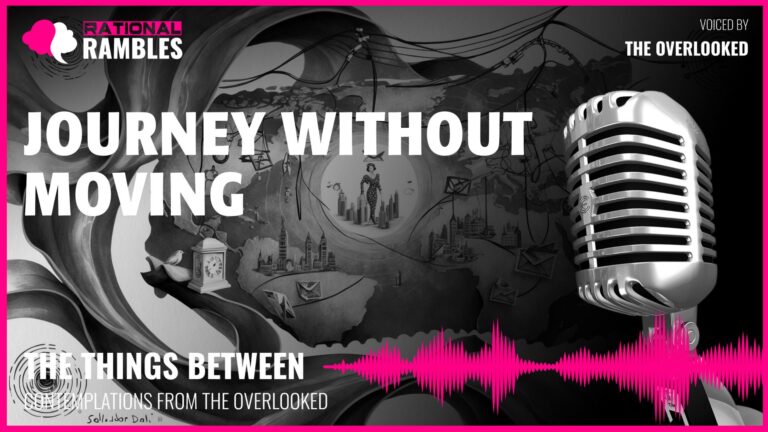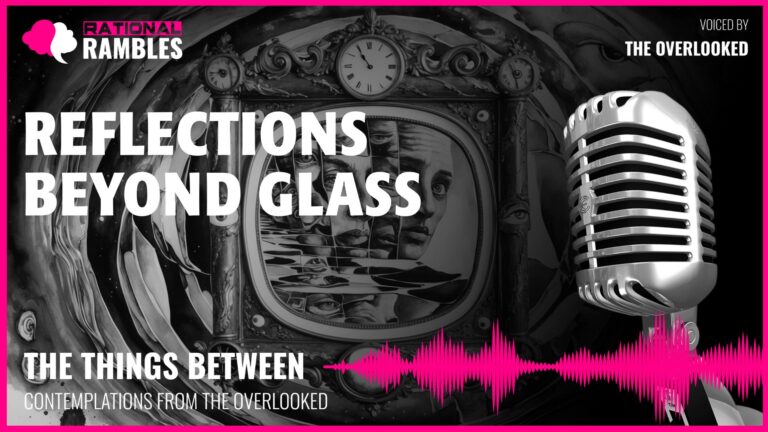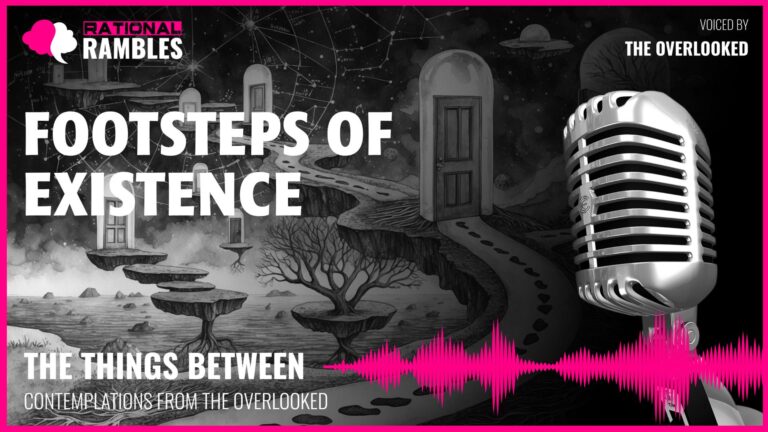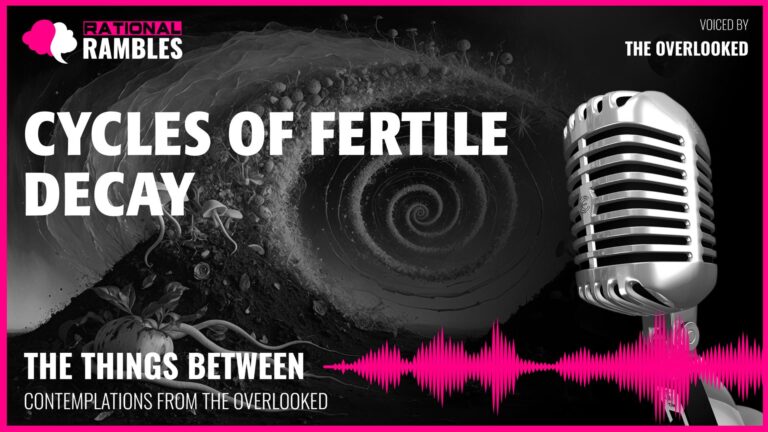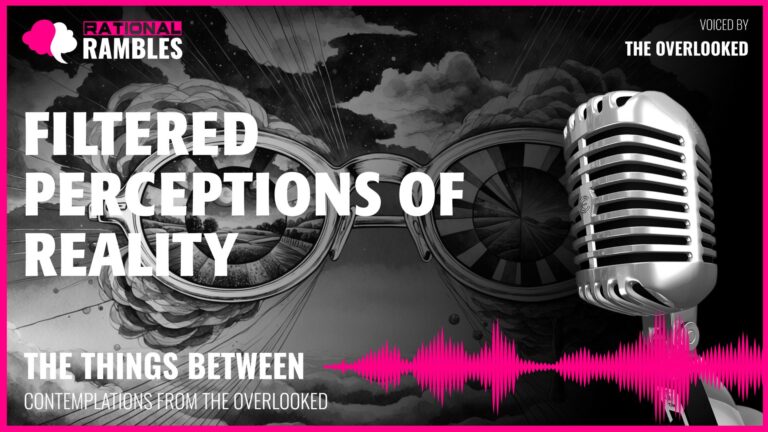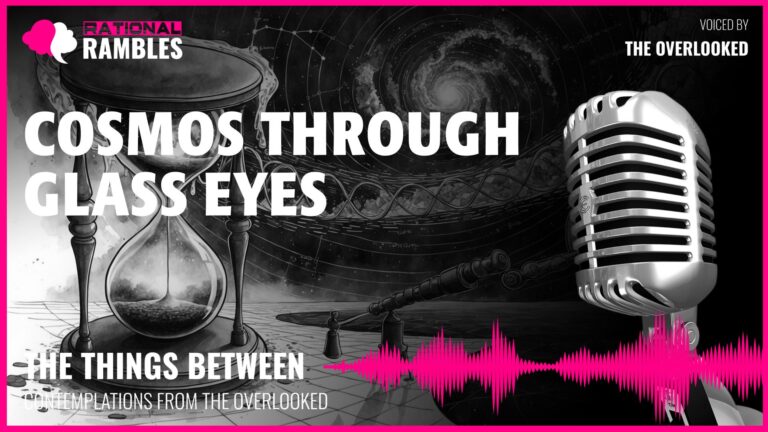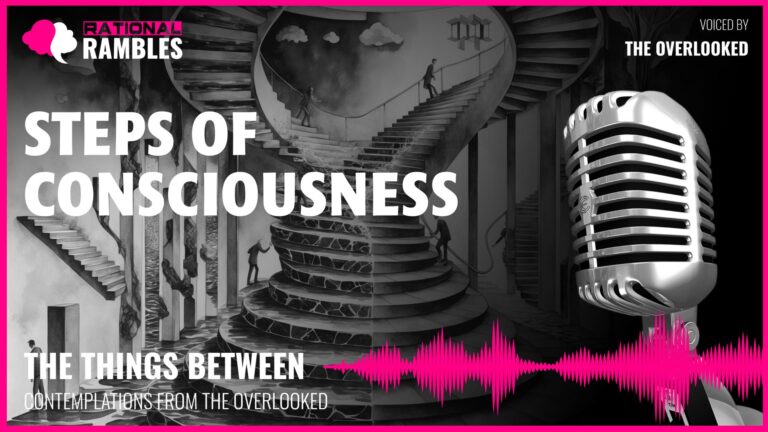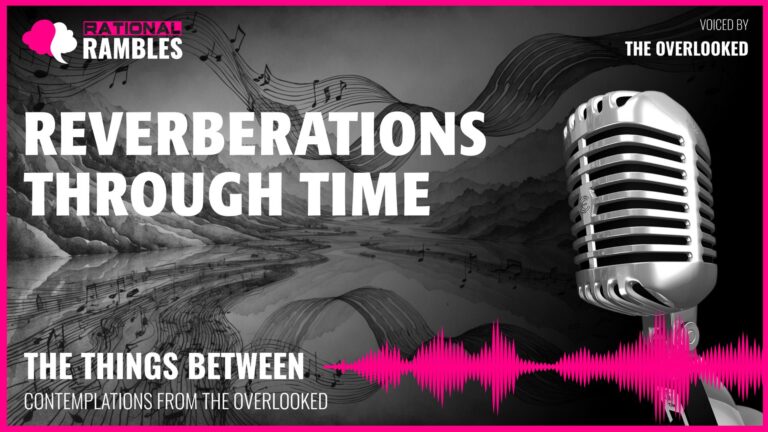The Architecture of Containment: Order, Meaning, and the Spaces Between
Introduction
In the vast landscape of human experience, few concepts are as fundamentally organizing yet philosophically rich as containment. The boundaries we create—both physical and metaphorical—shape our understanding of the world and ourselves. This tension between what is revealed and what remains hidden constitutes a fundamental aspect of human existence. We are, in many ways, defined by what we choose to preserve and what we allow to be seen.
The philosophy of containment extends far beyond simple physical enclosure. It encompasses questions of order versus chaos, presence versus absence, revelation versus concealment. It invites us to consider how meaning is constructed through the deliberate organization of space, and how identity is formed through what we choose to keep close. From the intimate treasures we safeguard to the memories we tuck away, the act of containing reflects profound truths about human nature.
This article explores the rich philosophical terrain of containment—examining how our impulse to organize, preserve, and occasionally rediscover shapes our relationship with objects, memories, and ultimately, ourselves. Through this exploration, we may find that the spaces we create to hold our possessions are not merely functional, but deeply emblematic of how we construct meaning in an otherwise chaotic universe.
The Dialectic of Revelation and Concealment
At the heart of containment lies a fundamental tension between revealing and concealing, between the visible and the hidden. This dialectic forms one of the most persistent philosophical dualities in human experience, manifesting across diverse domains from epistemology to aesthetics.
The Philosophical Tension of the Hidden
Martin Heidegger spoke of truth as aletheia—an unconcealment or disclosure. In his view, truth is not merely about correctness but about the revealing of what was previously hidden. Yet this revelation always occurs against a background of concealment; something can only be revealed because other things remain hidden. This simultaneous revealing and concealing creates the dynamic tension through which meaning emerges.
Similarly, Gaston Bachelard in “The Poetics of Space” explored how enclosed spaces like drawers and chests function as “organs of the secret psychological life.” For Bachelard, these spaces of containment are not merely physical but phenomenological—they structure our experience of intimacy and privacy. The act of concealing creates a depth that would otherwise be impossible in a world of pure transparency.
The philosopher Michel Foucault further illuminated this dialectic through his analysis of power and knowledge. What is hidden often becomes invested with special significance precisely because of its concealment. The act of hiding something—whether an object, a memory, or a truth—transforms its ontological status, imbuing it with an aura of importance or danger.
The Power Dynamics of Accessibility
Who controls access to what is contained establishes subtle yet profound power relationships. The ability to reveal or conceal at will—to determine what remains hidden and what becomes visible—constitutes a form of authority. This dynamic operates at scales ranging from the personal (private diaries, locked boxes) to the institutional (classified documents, restricted archives).
Jacques Derrida’s concept of the “archive” explores this tension. For Derrida, archives aren’t neutral repositories but sites where power is exercised through the control of memory and knowledge. What is archived—preserved and made accessible—and what is excluded shapes collective understanding and identity. The boundary between inclusion and exclusion becomes a political frontier.
In everyday life, we witness this power dynamic in the intimacy of personal spaces. The right to determine what remains private—to maintain boundaries around certain aspects of our existence—is fundamental to human dignity. Yet these boundaries are constantly negotiated and sometimes violated, creating a persistent ethical tension around the limits of concealment and disclosure.
The Metaphysics of Order and Chaos
Human beings demonstrate a persistent drive toward organization—a compulsion to impose structure upon an otherwise chaotic world. This impulse toward order reveals something profound about our relationship with existence itself and our attempts to render it comprehensible.
The Human Impulse Toward Categorization
From the earliest philosophical systems to contemporary cognitive science, the human tendency to categorize and compartmentalize has been recognized as fundamental to thought itself. Aristotle’s system of categories attempted to organize all of being into discrete classifications. Kant’s transcendental philosophy posited categories as necessary conditions for the possibility of experience—we cannot perceive the world except through organizing structures inherent in consciousness itself.
This categorical imperative extends beyond abstract thought into our physical environments. We create ordered spaces as external manifestations of internal cognitive frameworks. The anthropologist Mary Douglas argued that our concerns with purity and pollution—with things being “in place” or “out of place”—reflect deep cultural anxieties about boundary maintenance. When we organize physical spaces, we aren’t merely arranging objects; we’re constructing symbolic systems that reinforce our understanding of the world.
Modern cognitive science confirms this view, suggesting that categorization is not merely a cultural convention but a biological necessity. The human mind, faced with overwhelming sensory input, must organize information into manageable patterns. Categories allow us to make predictions, form associations, and navigate complex environments without constantly processing every detail anew.
Order as Imposed or Discovered
A persistent philosophical question emerges: Is order something we impose upon a fundamentally chaotic reality, or something we discover within an inherently structured universe? This tension has animated philosophical debate from ancient times to the present.
For thinkers in the tradition of Plato, order reflects an underlying reality—the Forms or Ideas that exist independently of human perception. Order is discovered rather than created, revealing eternal truths. In contrast, philosophers like Nietzsche suggest that our orderly categorizations are “useful fictions”—human impositions on a world that in itself contains no inherent categories or boundaries. Nietzsche writes in “The Gay Science” that truth itself is “a mobile army of metaphors” rather than a reflection of some pre-existing order.
The philosopher Nelson Goodman offered a nuanced view in his concept of “worldmaking.” For Goodman, we neither discover worlds wholly intact nor create them ex nihilo; rather, we make worlds by working with existing materials, reconfiguring and organizing them according to our needs and purposes. The organization of objects in space represents one such form of worldmaking—neither purely arbitrary nor absolutely determined.
The Comfort and Constraint of Boundaries
The creation of boundaries—physical or conceptual—offers psychological comfort. Containment provides a sense of control, a feeling that the overwhelming complexity of existence has been temporarily mastered. Yet these same boundaries can become constraints, limiting possibilities and obscuring connections. The philosopher Zygmunt Bauman noted this paradox in his analysis of modern life: our desire for order and security often comes at the cost of freedom and spontaneity.
The psychoanalyst D.W. Winnicott explored how the capacity to establish healthy boundaries emerges in human development. For Winnicott, the “transitional space”—neither fully internal nor fully external—allows for creative play with boundaries and categories. Perhaps our adult relationships with organized spaces reflect this early developmental achievement: the ability to create order while maintaining flexibility, to establish boundaries without becoming imprisoned by them.
The Zen Buddhist tradition offers yet another perspective, suggesting that true wisdom comes from recognizing the provisional nature of all our categories and boundaries. The heart of Zen practice involves moving beyond rigid categorizations to experience reality directly. In this tradition, order is neither imposed nor discovered but transcended altogether.
Time, Memory, and Preservation
Containment exists not only in space but in time. The act of preserving objects against the entropy of existence introduces a temporal dimension to containment philosophy. What we choose to keep, how we preserve it, and how we rediscover it reveals our complex relationship with temporality itself.
The Phenomenology of Preservation
To preserve something is to resist time’s erosion—to make a claim that certain things deserve continuation beyond their natural lifespan. This act is inherently value-laden, reflecting judgments about what merits protection from decay. The philosopher Hannah Arendt noted that culture itself emerges from this impulse toward preservation—toward creating artifacts that outlast individual lives.
The phenomenologist Edward Casey explores how containing spaces become “memory palaces”—repositories that hold not just objects but the temporality associated with them. When we preserve objects, we aren’t merely keeping things; we’re maintaining connections to past moments, creating material anchors for memory. The contained object becomes what philosopher Maurice Merleau-Ponty might call a “chiasm”—a point where past and present, material and memory, intersect.
This intersection reveals a paradox: the preserved object both captures time and stands outside it. It maintains a certain timelessness within its protected space while simultaneously serving as evidence of time’s passage. The yellowing photograph, the dried flower, the handwritten letter—each bears the marks of its own history while resisting complete dissolution.
Rediscovery and Temporal Distance
The moment of rediscovery—when what has been preserved is suddenly encountered anew—creates a unique temporal experience. The philosopher Walter Benjamin called this the “dialectical image,” a moment when past and present collide to create new meaning. In rediscovery, we experience not just the object itself but the temporal distance we have traveled since it was last encountered.
Marcel Proust famously captured this phenomenon in his description of involuntary memory triggered by a madeleine cookie. The preserved sensory experience, when suddenly reactivated, creates a bridge across time that transforms our relationship with both past and present. The contained object, rediscovered, reveals not only what it is but what we have become in the interim.
Henri Bergson’s concept of “duration” helps illuminate this experience. For Bergson, authentic temporality isn’t the mechanical ticking of clocks but the subjective experience of time as a continuous flow in which past and present interpenetrate. The rediscovered object momentarily reveals this durational quality of time, collapsing the artificial boundaries between then and now.
The Ethics of Preservation and Disposal
What we choose to preserve and what we allow to perish constitutes an ethical decision, reflecting values and priorities. The philosopher Giorgio Agamben has written about “bare life”—existence stripped of its cultural and symbolic significance, reduced to mere biological persistence. Similarly, objects can be reduced to “bare materiality” when they lose their meaning, becoming candidates for disposal.
The ritual of “cleaning out” spaces of containment involves complex evaluations of both utility and sentiment. Marie Kondo’s popular method of asking whether items “spark joy” recognizes that our relationships with possessions transcend functionality—they involve emotional and aesthetic dimensions that resist simple categorization. The decision to keep or discard involves judgments about not just what things are but what they mean and how they connect to our sense of identity.
Environmental philosophy further complicates these considerations. As Jane Bennett argues in “Vibrant Matter,” our disposal practices reflect assumptions about the ontological status of objects—whether they are passive materials or possess forms of agency and significance beyond human attribution. Recognizing the ecological consequences of disposal decisions introduces broader ethical considerations about our responsibility to the material world.
Identity and the Contained Self
The relationship between container and contained extends to our understanding of selfhood. How we conceptualize the boundaries of identity, the relationship between inner and outer experience, and the coherence of the self over time all reflect metaphors of containment.
The Container Model of Consciousness
Western philosophy has long employed container metaphors for consciousness. From Plato’s metaphor of the cave to Locke’s tabula rasa, from Freud’s topographical model of mind to contemporary cognitive science’s “mental spaces,” we persistently conceptualize consciousness as a container with contents. The philosopher Mark Johnson has documented how this conceptual metaphor shapes our understanding of mental experience—we “hold ideas,” “contain emotions,” and “compartmentalize feelings.”
This container model has profound implications. It suggests boundaries between self and world, between conscious and unconscious content, between what belongs to identity and what remains foreign to it. The psychologist William James recognized this in his distinction between the “I” and the “Me”—the self as subject and the self as object. The container metaphor allows us to conceptualize this reflexive relationship of the self to itself.
Yet many philosophical traditions question this model. Phenomenologists like Merleau-Ponty emphasize that consciousness is not a container but an activity—a continuous engagement with the world. Buddhist philosophy directly challenges the notion of a contained self, suggesting that this model creates an illusory sense of separation that leads to suffering. The contemporary philosopher Alva Noë argues that consciousness is not something that happens “in the head” but is an active relationship between organism and environment.
Psychological Compartmentalization
The concept of psychological “drawers”—mental compartments where we store thoughts or feelings for later examination—reflects how deeply containment metaphors structure our understanding of mental life. The psychoanalytic tradition, from Freud to contemporary practice, employs these spatial metaphors extensively. Repression, projection, introjection—all imply movements across boundaries between psychological spaces.
Cognitive dissonance theory examines how we maintain conceptual compartments to preserve psychological comfort, sometimes creating contradictory “spaces” that don’t communicate with each other. This compartmentalization can be adaptive or pathological—allowing us to function amid complexity but sometimes leading to fragmentation and internal contradiction.
Recent trauma theory has explored how traumatic experiences resist normal “containment” in narrative memory. The psychiatrist Bessel van der Kolk describes how traumatic memories remain unintegrated, existing outside the normal boundaries of autobiographical narrative. Healing involves creating conditions where these experiences can be gradually contained within coherent self-understanding—a literal re-membering of what has been dis-membered.
Cultural Containers of Identity
Beyond individual psychology, cultural systems provide containers for identity. The philosopher Charles Taylor speaks of “social imaginaries”—shared frameworks that define possibilities for selfhood within a particular cultural context. These frameworks establish boundaries around what constitutes a recognizable identity, determining what belongs “inside” and “outside” the container of culturally legible selfhood.
Marginalized identities often challenge these containers, revealing their constructed nature. Gloria Anzaldúa’s concept of “borderlands consciousness” describes experiences that exist at the boundaries of cultural containers, neither fully inside nor outside established categories. Such liminal experiences expose the provisional nature of identity containers while creating possibilities for new forms of selfhood that transcend existing boundaries.
The anthropologist Mary Douglas observed that what exists at the boundaries of categories often becomes taboo—invested with special power and danger precisely because it challenges categorical norms. Transgender identities, mixed-race experiences, and cultural hybridity all occupy these boundary spaces, simultaneously threatening and transforming existing containers of identity.
The Ethics of Holding and Releasing
Containment involves ethical responsibilities—obligations toward what is held, decisions about what should be preserved or released, judgments about appropriate boundaries and limits. A fully developed philosophy of containment must address these ethical dimensions.
Custody and Care
To contain something is to assume a form of custody—to take responsibility for its preservation and protection. This custodial relationship exists on a spectrum from gentle holding to possessive control. Martin Buber’s distinction between “I-It” and “I-Thou” relationships illuminates this spectrum. In an “I-It” relationship, what is contained becomes merely an object, possessed rather than engaged with. In an “I-Thou” encounter, what is contained retains its integrity and autonomy, held but not possessed.
The philosopher Simone Weil explored this ethical tension in her concept of “attention.” For Weil, true attention involves holding something in consciousness without imposing upon it—creating a space where the other can exist on its own terms. This form of attention represents an ethical ideal of containment that respects the autonomy of what is held.
Museums, archives, and other institutional containers face similar ethical questions about their custodial responsibilities. Recent debates about cultural repatriation highlight the tension between preservation and justice, between maintaining custody and acknowledging historical wrongs. The ethics of containment extends beyond personal relationships to these institutional contexts, raising questions about who has the right to contain cultural artifacts and under what conditions.
Boundaries and Consent
Ethical containment respects appropriate boundaries—between public and private, between what may be accessed and what remains protected. Privacy theorists like Helen Nissenbaum have developed frameworks for “contextual integrity” that address these boundary questions. What should be contained in private spaces? What may ethically be exposed to public view? These questions involve complex judgments about consent, autonomy, and relational responsibility.
Digital technologies have transformed these boundary conditions, creating new questions about the ethics of containment. Data storage—a form of digital containment—raises urgent concerns about consent, security, and appropriate access. When personal information is “contained” in corporate databases, who controls the boundaries of that containment? Who determines what may be extracted, analyzed, or shared?
The philosopher Luciano Floridi proposes an “ethics of information” that addresses these questions, suggesting that informational privacy constitutes a fundamental ethical good. Just as physical containment involves ethical responsibilities, digital containment requires frameworks for respecting boundaries and ensuring appropriate custody.
Secrets and Transparency
The ethics of secrecy—of deliberate concealment—remains philosophically complex. Sissela Bok’s work on secrecy explores the moral dimensions of hidden knowledge, suggesting that secrecy is neither inherently good nor inherently bad but must be evaluated in context. Some forms of concealment protect legitimate privacy interests; others enable harm by shielding wrongdoing from accountability.
The philosopher Michael Lynch has examined how “transparency” has become a dominant value in contemporary discourse. Yet Lynch argues for the importance of “opacity”—spaces protected from constant visibility and surveillance. A thoughtful ethics of containment recognizes both the value of transparency in promoting accountability and the necessity of protected spaces for authentic human flourishing.
Family systems theory examines how secrets function within intimate relationships. Some secrets maintain appropriate boundaries; others create dysfunctional patterns that undermine relational health. Determining which secrets should be kept and which should be revealed requires nuanced ethical judgment, balancing values of honesty, autonomy, and care.
The Poetics of Containment
Beyond its practical and philosophical dimensions, containment possesses aesthetic and poetic significance. The spaces we create to hold our possessions, memories, and experiences can be understood through the lens of aesthetic theory, revealing how containment shapes our sensory and imaginative relationship with the world.
The Aesthetics of Enclosed Space
Gaston Bachelard’s phenomenology of intimate spaces examines how enclosure creates particular aesthetic experiences. For Bachelard, the drawer, the chest, the miniature—all create a “poetics of space” that engages imagination in specific ways. The enclosed space invites imagination to expand within constraints, creating a paradoxical experience of “intimate immensity.”
Japanese aesthetic traditions like ma (negative space) and wabi-sabi (imperfect beauty) explore how containment creates aesthetic value. The tea ceremony, the carefully arranged garden, the minimalist interior—all employ principles of judicious containment to create aesthetic experiences that balance presence and absence, revelation and concealment.
Contemporary installation art often plays with these dimensions, creating contained environments that transform perception and challenge conventional boundaries. Artists like James Turrell construct spaces that contain not objects but experiences of light and perception, inviting reflection on how containment shapes consciousness itself.
Metaphor and Meaning
The philosopher Paul Ricoeur examined how metaphor creates new meaning by bringing together previously separate semantic domains. Containment functions as a powerful metaphorical structure, allowing us to understand abstract concepts through concrete spatial relationships. We speak of “containing our emotions,” “thinking outside the box,” or being “closed off”—all extensions of physical containment into psychological and conceptual domains.
Literary theory has explored how narrative itself functions as a form of containment—a structure that holds experience within meaningful boundaries. Frank Kermode’s analysis of narrative endings shows how stories contain chaotic experience within coherent temporal frameworks, creating what he calls “the sense of an ending.” The story, like the drawer, imposes boundaries that transform what they contain.
Poet Emily Dickinson famously wrote about containing vast experience within narrow forms: “To put Meaning in a Box / Squeezing in its Sides / Or slide it fullest Open / And it lies.” This poetic insight captures the paradox of containment—how boundaries simultaneously limit and enable meaning, how form both constrains and liberates what it contains.
The Dialectic of Inside and Outside
The philosopher Gaston Bachelard explored the dialectic between inside and outside as a fundamental dimension of human experience. For Bachelard, this dialectic isn’t merely spatial but existential—it shapes our understanding of safety and danger, intimacy and exposure, belonging and alienation.
Contemporary architectural theory extends this analysis, examining how built environments create experiences of interiority and exteriority. Architects like Juhani Pallasmaa have explored how spaces shape embodied experience, creating what Pallasmaa calls “atmospheres” that aren’t merely aesthetic but existential—they structure our sense of being-in-the-world.
Visual art has long explored this inside/outside dialectic through techniques like framing, perspective, and the creation of pictorial space. Art historian Ernst Gombrich analyzed how picture frames function as containers that both separate and connect the represented world and the viewer’s world, creating a boundary that is simultaneously a threshold.
Containment in the Digital Age
Contemporary technologies have transformed traditional containment practices, creating new questions about boundaries, access, and materiality. As physical containers increasingly give way to digital ones, our philosophical understanding of containment must adapt to these changing conditions.
The Transformation of Material Boundaries
Digital storage has radically altered the materiality of containment. Physical constraints—the limited capacity of a drawer or box—no longer apply in the same way to digital archives. This change quantitative (more can be stored) and qualitative (different types of relationships emerge between stored items).
The philosopher Bernard Stiegler has explored how digital technologies create new forms of “grammatization”—new ways of recording and organizing human experience. Unlike physical containment, digital storage allows for instant retrieval, multiple categorizations, and algorithmic organization. These capabilities transform not just how we store information but how we conceptualize the relationship between present experience and preserved content.
The material philosopher Jane Bennett might note that digital containment obscures its own materiality—the physical infrastructure of servers, cables, and energy consumption that enables virtual storage. This obscuring creates an illusion of immateriality that shapes our relationship with digital content in profound ways.
Access and Control in Networked Environments
Traditional containers have clear boundaries—they are open or closed, accessible or inaccessible. Digital containment introduces more complex boundary conditions, with graduated levels of access, conditional permissions, and networked relationships between contained content.
Michel Foucault’s concept of the “panopticon”—a structure that enables constant surveillance—takes on new relevance in digital contexts. Unlike physical containers that shield their contents from view, digital containers often enable unprecedented visibility, creating what the social theorist Shoshana Zuboff calls “surveillance capitalism.”
Yet digital environments also enable new forms of concealment and encryption. The philosopher Helen Nissenbaum has developed the concept of “obfuscation” as a strategy for maintaining privacy in networked environments—deliberately introducing noise or ambiguity to prevent total transparency. These strategies represent attempts to reclaim the protective function of containment in contexts designed for visibility.
Memory and Forgetting in Digital Culture
Digital containment transforms our relationship with memory and forgetting. As Viktor Mayer-Schönberger has argued in “Delete: The Virtue of Forgetting in the Digital Age,” traditional forgetting was the default condition, with remembering requiring effort. Digital containment reverses this relationship—remembering becomes the default, with forgetting requiring deliberate action.
This shift has profound implications for identity and narrative. If nothing is forgotten—if all past expressions, actions, and associations remain perpetually accessible—how does this change our relationship with our own histories? The right to be forgotten, increasingly recognized in legal frameworks, represents an attempt to reclaim the selective nature of memory that characterized pre-digital containment.
The media theorist Marshall McLuhan famously declared that “the medium is the message”—the form of communication shapes its content. Similarly, the medium of containment shapes what is contained. Digital containers don’t merely store the same content differently; they transform the nature of what is stored and how we relate to it, creating new possibilities and challenges for human memory and identity.
Conclusion: The Philosophy of Bounded Infinity
The exploration of containment leads us ultimately to a paradox—the bounded infinity that emerges when finite spaces hold potentially infinite meaning. This paradox offers a metaphor for human existence itself: we are finite beings capable of infinite imagination, limited creatures who transcend our limitations through acts of creation and preservation.
The philosopher Gaston Bachelard captured this paradox in his observation that “an entire universe is contained in a nutshell.” The smallest contained space can hold vast significance, just as the briefest human life can embody profound meaning. The drawer, the box, the archive—all these containers transcend their physical dimensions through what they represent and preserve.
The dialectic between boundary and transcendence, between limitation and possibility, defines not just our relationship with physical containers but our existential condition. We exist within boundaries—of body, of time, of circumstance—yet continually reach beyond these constraints through imagination, memory, and connection. The philosopher Gabriel Marcel distinguished between “problem” and “mystery”—the former can be objectified and solved, while the latter envelops us, making us participants rather than external observers. Containment exists at this intersection, simultaneously a practical problem of organization and an existential mystery of meaning.
In our daily practices of containing, preserving, revealing, and concealing, we enact a fundamental philosophical engagement with existence. We impose temporary order on chaos, create meaning through selection and arrangement, and establish fragile continuity in the face of constant change. These acts may appear mundane—the organizing of a drawer, the preservation of a keepsake, the concealment of a secret—yet they embody our deepest responses to the human condition.
Perhaps the wisdom of containment lies in this recognition: that boundaries are both necessary and provisional, that order is both imposed and discovered, that meaning emerges from the delicate balance between revelation and concealment. In understanding the philosophical depths of containment, we come to appreciate how our simplest acts of organization and preservation participate in the eternal human project of making meaning in a universe that offers no predetermined categories or boundaries.
The true art of containment may be learning to hold without grasping, to preserve without possessing, to create order without rigidity—to maintain the delicate balance between structure and openness that allows both security and growth. In this balance, we find not just a practical skill but an existential wisdom: the capacity to create bounded spaces that paradoxically expand our experience of what it means to be human.


